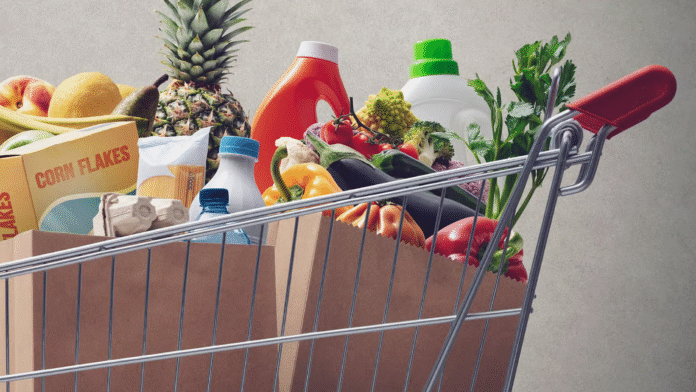In a massive move set to benefit millions of consumers, FMCG (Fast-Moving Consumer Goods) giants HUL (Hindustan Unilever), Procter & Gamble (P&G), and Emami have announced significant price cuts on a wide range of their popular products. This welcome change is a direct result of the recent GST (Goods and Services Tax) rate cuts implemented by the government. From everyday essentials like Dove and Vicks to kitchen staples like Horlicks and Kissan Jam, consumers are now set to enjoy substantial savings. This blog post will dive deep into the new rates, explain the ripple effect on the economy, and what this means for your shopping cart. Also check full details GST Rates in India 2025
The Big News: What’s Getting Cheaper?
The Indian government has made a bold move, rationalizing the GST structure and shifting a slew of daily-use items into a lower tax bracket. Previously, many products were taxed at 12% or even 18%. Now, they are falling under the 5% GST slab. The ultimate goal? To pass on these tax benefits directly to the consumer. This isn’t just a corporate decision; it’s a nationwide initiative.
The effect is immediate and widespread. Leading FMCG players wasted no time in responding. Consequently, they’ve revised their pricing lists, with the new rates taking effect from September 22.
Here’s a snapshot of some of the key products and their new rates:
- Hindustan Unilever (HUL): The company has slashed prices on some of its best-selling brands. For instance, a 340 ml bottle of Dove Hair Fall Shampoo is now priced at ₹435, down from ₹490. Similarly, Lifebuoy soaps (a pack of four, 75 gm) have been reduced to ₹60 from ₹68. In addition, kitchen items like Kissan Jam and Bru Coffee have also become cheaper, making a noticeable difference in household budgets. Horlicks (200 gm) now costs ₹110, a significant drop from its previous price of ₹130.
- Procter & Gamble (P&G): P&G is making its products more accessible. Specifically, the price of Vicks Action 500 Advance has been cut to ₹64 from ₹69. Furthermore, hair care products like Pantene Hair Fall Control shampoo (340 ml) will now retail at ₹355, a substantial reduction from ₹410. Baby diapers under the Pampers brand have also seen cuts, a massive relief for new parents. Overall, this demonstrates a clear commitment to leveraging the GST benefits for their customers.
- Emami: The homegrown FMCG player is also playing its part. Consequently, it has reduced prices on its popular Ayurvedic and personal care portfolio. For example, Boroplus Antiseptic Cream (80 ml) is now available at ₹155 instead of ₹165. Similarly, the price of Navratna Oil (180 ml) has been lowered to ₹145 from ₹155. These moves are a game-changer for consumers who rely on these daily-use products.
The Bigger Picture: A Boost for the Economy
This price cut isn’t just about saving money at the checkout counter; it has a much broader economic impact. The decision to lower GST on these essential items is a strategic move to stimulate consumption. Basically, when prices go down, people tend to buy more. This creates a virtuous cycle of increased demand and higher sales volume.
Moreover, this is a direct cash transfer to the consumer. The savings from these price cuts can be used for other purchases, thereby fueling different sectors of the economy. This, in turn, could lead to higher production levels for these FMCG companies. They might ramp up their manufacturing to meet the increased demand, potentially creating new jobs.
Ultimately, this benefits the entire supply chain. Retailers, wholesalers, and distributors will all see a boost in their sales. It’s a classic win-win scenario. The government gets to demonstrate the effectiveness of its tax reforms, companies get to expand their market reach, and consumers get to enjoy their favorite products at lower prices.
What This Means for You: Smart Shopping is the New Trend
This is an unprecedented opportunity for consumers. It’s the perfect time to stock up on your favorite brands. However, it’s important to be a smart shopper. Here’s what you need to know:
- Check the MRP: Don’t just assume the price is lower. Always check the MRP (Maximum Retail Price) on the packaging. The government has mandated that companies must print the new prices.
- Look for New Stock: The new, cheaper stock will take some time to fully reach all retail shelves. Therefore, if you don’t see the new price on a product, it might be older stock.
- Compare and Save: Use this opportunity to compare prices across different brands and even different retail outlets. You can now get your favorite brands at a better value than before.
This is a golden period for Indian consumers. The government’s bold tax reform, combined with the quick action of leading companies, has created a situation where everyone benefits. So, go ahead and fill your shopping cart. Your pocket will thank you!
To get a detailed breakdown of how these new rates will impact your favorite Maruti Suzuki model, you can check out our comprehensive analysis on the topic.🛒our article on [GST Revolution: Maruti Suzuki Slashes Car Prices] (https://vrittonic.com/gst-revolution-maruti-suzuki-slashes-car-prices-indias-automotive-market-reacts/) provides a model-by-model list of the price cuts and what they mean for the end customer.





